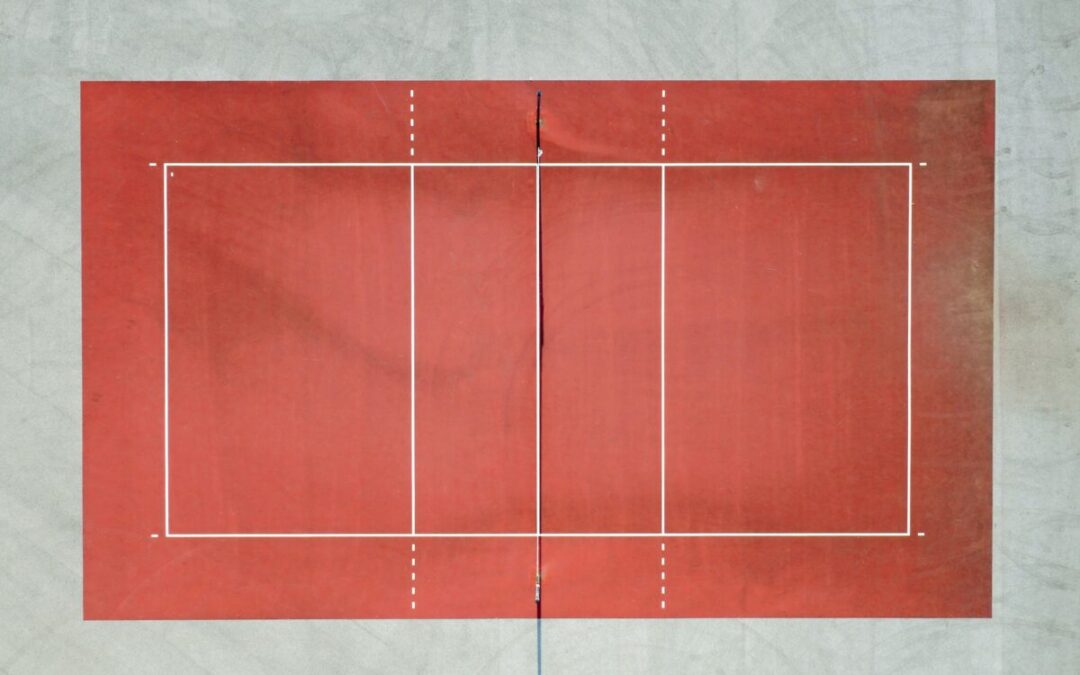Volleyball, a dynamic and fast-paced sport, requires players to be well-versed in the intricacies of the volleyball court. Understanding the dimensions, markings, and strategies for effective play is crucial for success on the court. In this article, we’ll dive into the essentials of knowing the volleyball court, from its dimensions to the evolution of court design.
I. Introduction
Volleyball is more than just a game; it’s a strategic battle on a defined battlefield—the volleyball court. Whether you’re a seasoned player or a newcomer to the sport, grasping the nuances of the court can significantly impact your performance.
II. Dimensions of a Volleyball Court
A. Standard Dimensions
A regulation volleyball court is rectangular, measuring 18 meters long and 9 meters wide. Understanding these dimensions provides the foundation for players to navigate the court effectively.
B. Net Height and Placement
The net, a central element in volleyball, is set at a specific height for men and women. Proper net placement ensures fair play and equal opportunities for both teams.
C. Boundary Lines and Zones
The court is divided into various zones, each serving a specific purpose. Familiarizing yourself with these lines and zones is essential for strategic positioning during the game.
III. Court Markings
A. Centerline
The centerline divides the court into two equal halves. Players need to be aware of this line to avoid crossing into the opponent’s territory illegally.
B. Attack Lines
Attack lines determine where players can spike the ball. Knowing these lines is vital for offensive strategies and preventing faults.
C. Service Lines
Service lines mark the area from which players serve the ball. Understanding service lines helps players position themselves correctly during serves.
D. Antenna Placement
Antennas are crucial for defining the boundaries of the playing area. Recognizing their placement aids in making accurate judgments during gameplay.
IV. Positions on the Court
A. Front Row Positions
Players in the front row have specific responsibilities, including blocking and attacking. Mastering these positions is key to a well-coordinated team.
B. Back Row Positions
Back row players focus on defense and setting. Knowing the roles and rotation rules is essential for seamless transitions during the game.
C. Rotation Rules
Understanding how players rotate on the court ensures a fair distribution of roles and optimizes team dynamics.
V. Basic Rules of the Volleyball Court
A. Scoring System
Volleyball follows a rally scoring system, meaning points can be scored on every serve. Familiarity with this system is fundamental for effective gameplay.
B. Faults and Violations
Knowing common faults and violations helps players avoid penalties and maintain a fair and enjoyable game.
C. Substitution Rules
Substitutions are a strategic aspect of volleyball. Being aware of the rules governing substitutions enhances a team’s flexibility and adaptability.
VI. Strategies for Playing on Different Courts
A. Indoor vs. Beach Volleyball
Each type of volleyball court presents unique challenges. Adapting strategies based on the type of court is essential for success in different playing environments.
B. Adapting to Various Court Conditions
Environmental factors, such as wind and surface conditions, can affect gameplay. Players should be adaptable and modify their strategies accordingly.
VII. Importance of Court Awareness
A. Player Positioning
Being aware of teammates’ positions and movements is crucial for effective teamwork and coordination.
B. Communication on the Court
Clear and concise communication is the backbone of successful volleyball teams. Players must communicate effectively to execute plays seamlessly.
VIII. Tips for Better Performance
A. Footwork Techniques
Mastering footwork is essential for agility and quick movements on the court. Players should focus on drills to enhance their footwork skills.
B. Reading Opponents’ Movements
Anticipating opponents’ actions is a skill that sets elite players apart. Developing the ability to read opponents contributes to effective defensive strategies.
IX. Common Mistakes to Avoid
A. Violating Court Boundaries
Players often make mistakes related to court boundaries. Understanding the rules and staying within the defined playing area is crucial for fair play.
B. Miscommunication Among Players
Lack of communication can lead to confusion and errors. Teams should prioritize effective communication to avoid misunderstandings.
X. The Evolution of Volleyball Courts
A. Historical Changes
Volleyball court design has evolved over the years. Exploring these changes provides insights into the development of the sport.
B. Impact on Gameplay
Changes in court design have a direct impact on gameplay. Players should stay informed about these changes to adapt their strategies accordingly.
XI. How to Set Up a Volleyball Court
A. DIY Court Setup
For enthusiasts wanting to set up a backyard court, understanding the basics of court construction is essential. DIY setups can be a fun and rewarding project.
B. Professional Court Installation
Professional installations guarantee a standard-compliant court. Consulting experts for court setup ensures a safe and enjoyable playing experience.
XII. Safety Measures on the Volleyball Court
A. Proper Footwear
Wearing appropriate footwear reduces the risk of injuries. Players should invest in
quality volleyball shoes to protect their feet during intense gameplay.
B. Stretching Exercises
Pre-game stretching is crucial for preventing injuries. Incorporating warm-up routines into the pre-game preparation routine is a best practice.
C. Injury Prevention
Players should be aware of common volleyball-related injuries and take preventive measures. Consultation with a sports physician can provide valuable insights.
XIII. Volleyball Court Maintenance
A. Cleaning and Upkeep
Regular maintenance ensures the longevity of the court. Cleaning and upkeep prevent wear and tear, preserving the quality of the playing surface.
B. Addressing Wear and Tear
Promptly addressing any wear and tear on the court is essential. Neglecting repairs can compromise player safety and affect gameplay.
XIV. The Future of Volleyball Courts
A. Technological Advancements
Innovations in court technologies continue to enhance the sport. Exploring these advancements opens up new possibilities for players and enthusiasts alike.
B. Sustainability in Court Design
Sustainable court designs are gaining prominence. Embracing eco-friendly materials and practices contributes to the long-term health of the sport and the environment.
XV. Conclusion
In conclusion, knowing the volleyball court is the foundation for success in this exhilarating sport. From understanding dimensions and markings to adapting strategies for different courts, players can elevate their game by mastering these essentials. So, step onto the court with confidence, armed with the knowledge that goes beyond the game itself.
FAQs
- How big is a standard volleyball court?
The standard dimensions of a volleyball court are 18 meters in length and 9 meters in width. - What is the purpose of the attack lines on the volleyball court?
Attack lines determine where players can spike the ball during offensive plays. - Why is communication important on the volleyball court?
Clear communication among players is essential for effective teamwork and coordinated gameplay. - How has the design of volleyball courts evolved over the years?
The design of volleyball courts has evolved to meet changing standards and enhance the overall playing experience. - Are there specific safety measures for preventing injuries on the volleyball court?
Wearing proper footwear, incorporating stretching exercises, and addressing court maintenance are crucial safety measures for preventing injuries.

